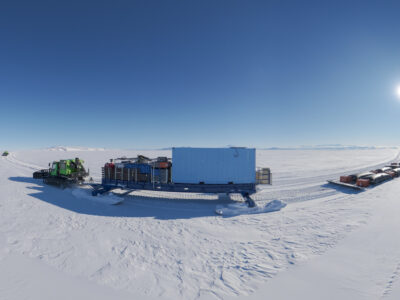I don’t want to give you the idea that science is all fun and games. We work hard! But I have to admit that today has been pretty spectacular. The morning was spent watching the helicopters take off and land for an ice reconnaissance mission. Since the ship is fully iced in, we got to go off ship and play in the snow!
When I took that photo, I was standing on 3 inches of snow over about 3 feet of ice over some 2000 feet of water. You can see the ship and the returning helicopter!
In the Q & A post, I showed a photo of an iceberg. That ice came from water vapor in the atmosphere which formed snow or rain and landed on an ice shelf or glacier. The ice then broke off into the ocean.
The ice under the snow in this picture is completely different. It came from the ocean! When seawater freezes, it forms sea ice that floats on the surface of the water. The ice crystals push the salt out in to little pockets between the crystals. Over time, the salt drains out leaving fresh ice behind. The ice we were on is called fast ice, because it is attached (“made fast” in sailing terms) to the ice shelf.




